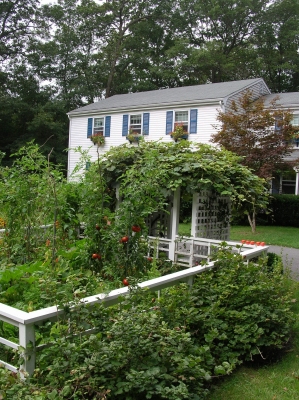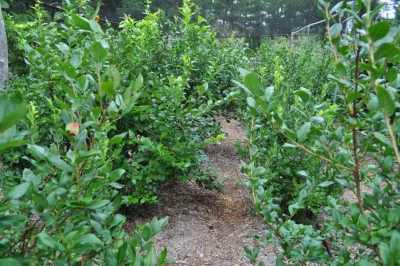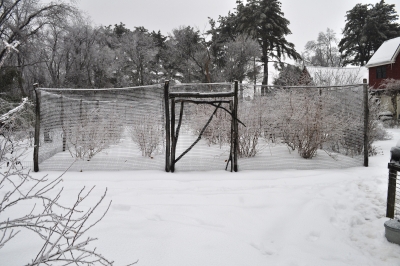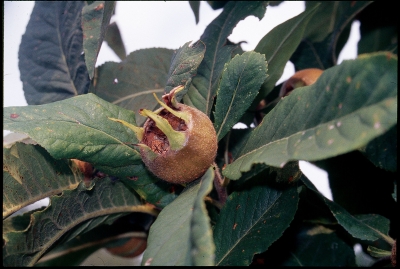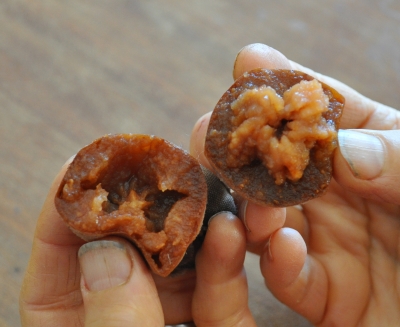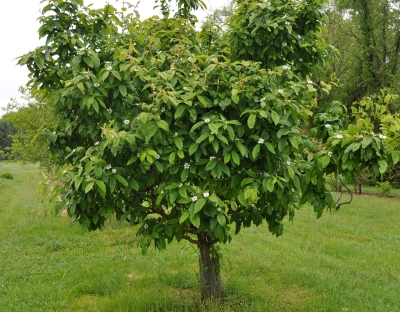QUICK, NO WORK GARDEN, FOR STARTERS
/18 Comments/in Design, Gardening, Vegetables/by Lee ReichPrescription for a New Gardener
It seems like everybody’s a gardener, or is becoming one, this time of year. And a lot of people have been asking me questions. Like my niece Lana, for instance, who moved along with her husband, a baby, and a toddler to a new house last fall and is ready to dig into a garden this spring — but, as Lana said, a garden “that will be easily manageable for her and interesting to her 3 year old.” (The one-year-old is still enthralled with her thumb and other such things.) So, for Lana and other beginning or non-gardeners, here is a simple plan for a small garden that requires almost “no time.”
The most stringent requirement for this garden is sun. The more the better. And the closer the garden is to the back door, the more you will be drawn to it, whether to dash out to pick a few leaves of lettuce, or to pull a wayward weed. This garden can be, probably should be, small. Let’s assume it is ten feet by ten feet.
The second requirement is soil that does not stay sodden for hours after a heavy rain. Push a can with both ends open into a hole in the soil and add water; it should drain faster than an inch an hour. If not, choose a new location or make raised beds.
With sun and water taken care of, soil preparation begins. And ends a few minutes later! Blanket this area with a four-sheet thickness of newspaper (do not use colored pages), overlapped and wetted. Done, almost. The newspaper will smother existing vegetation, and keep out weeds during the growing season. And as the paper rots away, it will enrich the soil.
The planting plan is simple: divide the garden into four beds, delineated by two 18 to 24 inch wide paths going up the center of each side and crossing each other in the center of the garden. Cover the newspaper in the paths with wood chips, wood shavings, sawdust, or pine needles. In the beds, purchase some weed-free compost, enough to lay at least a one-inch depth over the newspaper.
Sow seed right into the compost layer. Peas and lettuce need to be planted early — as in now — because they both enjoy cool weather in rows about a foot apart. Make each pea row four inches wide, then scatter the seeds so they are about an inch apart down and across the row.
The next wave of planting takes place after warm weather has settled, in late May. Buy tomato transplants and set them in one of the northern quadrants. If needed make a hole through the newspaper into the soil below to accommodate the full depth of the transplant. Grow a variety for flavor, like Brandywine, Sungold, or Amish Paste. Each plant should be two or three feet from its neighbor, depending on whether you are going to stake your tomatoes or allow them to sprawl. Eventually you will have a jungle of vines in danger of overtaking or enlarging your garden, so take a few minutes occasionally during the summer to prune wayward stems from the tomato plants.
Plant sweet corn and cucumber seeds at the same time as tomato transplants. Since corn is a tall grower, it gets the other northern quadrant. Plant three seeds together in “hills,” which are groups of seeds, not mounds of dirt, spaced two feet apart each way. Cucumbers get the final, southern quadrant. Sow six seeds per hill, with hills three feet apart. Grow a bush-type cucumber, like Salad Bush or Bush Pickle. Once the corn and cucumber seeds are up and growing vigorously, ruthlessly thin the plants so each corn hill has only one plant and each cucumber hill has three plants.
This garden gets one final planting in early July. But where, since all four quadrants are used up? Pull out the peas and lettuce, which flag anyway during hot weather, and plant in their place bush beans. Bush Blue Lake and Bush Romano are good choices.
This garden will produce a limited amount of vegetables with a minimum amount of work. Success may tempt you to enlarge your garden and grow a greater variety of plants next year.
Get Your Compost On
A gardening friend called to ask how much compost is needed to cover his garden. It turns out that a one inch depth of compost will supply all the nutrition, plus a lot of other goodies, that a vegetable garden needs to nourish the plants for one year. So that one-inch depth needs replenishment annually.
(Less compost could be used if the deficit is made up by fertilizer. But compost is the Cadillac of plant foods while also offering protection against pests, improved aeration and water retention in the soil, protection against erosion, and other known and unknown benefits.)
Back to the amount needed: 1/3 of a cubic yard (300-500 pounds, depending on moisture) will cover 100 square feet 1 inch deep. That’s a lot of compost, which beginning gardeners will likely be buying. If you’re buying compost in bulk, which is the least expensive way to purchase it, make sure it’s good stuff by asking some questions, such as what went into the compost. Avoid using compost that contains industrial wastes — especially in the vegetable garden — because of possible toxins like excessive quantities of heavy metals that could contaminate your food. Also ask how the compost has been prepared and stored.
The ideal would be to make enough of your own compost. Next year, perhaps.
BLUEBERRIES OUTSIDE, APHIDS INSIDE
/12 Comments/in Fruit, Gardening, Pests, Pruning, Soil/by Lee ReichPlant the Best-Tasting Fruit
My sixteen blueberry plants keep me in blueberries year ‘round, so I’m not planting any this year. But you are, or should be. The bushes are attractive in every season, with white blossoms in spring, foliage that looks spry all summer and turns crimson red in fall, and stems that shade to red in winter. The bushes are almost pest-free. And the berries are healthful and delicious.
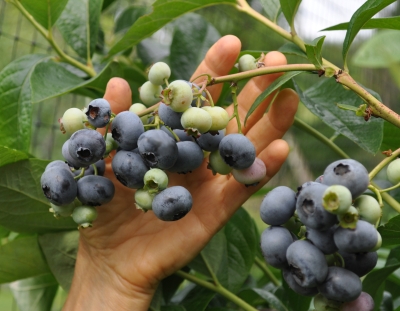
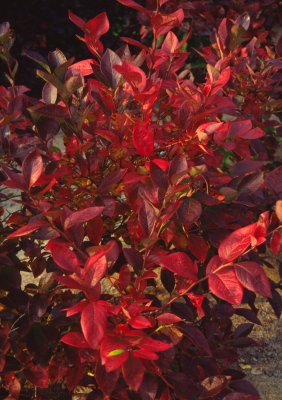 All you would-be blueberry planters out there: Pay attention to the soil for your plants, about which I’m going to offer advice. Too many people plunk a blueberry bush into a hole dug in their lawn and then wonder about the lack of berries. Poor growth, that’s why. The plants bear fruit on one year old stems. If shoots grow only a few inches one year, there’s little room on which to hang berries the following year.
All you would-be blueberry planters out there: Pay attention to the soil for your plants, about which I’m going to offer advice. Too many people plunk a blueberry bush into a hole dug in their lawn and then wonder about the lack of berries. Poor growth, that’s why. The plants bear fruit on one year old stems. If shoots grow only a few inches one year, there’s little room on which to hang berries the following year.
Taking a cue from wild blueberries, here’s what the bushes need, soil-wise: acidity (pH 4-5.5), organic matter, relatively low fertility, moisture, air, and no competition from weeds. For starters, check the soil pH with either a home testing kit or by taking a sample to a Cooperative Extension office or soil testing laboratory. If soil is not sufficiently acidic, add sulfur, preferable pelletized sulfur for ease of handling, 3⁄4 pound of sulfur per 100 square feet in sandy soils or three times this amount in heavier soils, for each pH unit the soil is above 4.5. Contrary to popular myth, adding oak leaves or pine needles will NOT do the trick. Spread sulfur over the ground as far as the eventual spread of the roots, which is about 3 feet in all directions.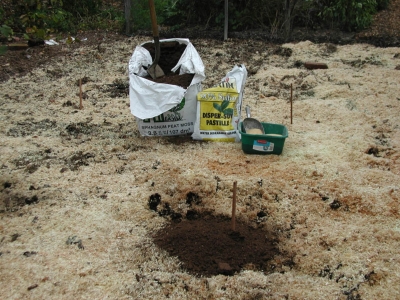
Then dump a bucketful of peat moss right where you plan to dig each hole. Dig the hole deep and twice as wide as needed to get the plant in the ground, mixing the peat moss with the soil. Peat moss provides a long-lasting source of organic matter, which also helps with aeration and water retention.
Finally, plant and water.
Wait, you’re not finished yet. Right after planting, spread some organic mulch, such as wood shavings, leaves, or pine needles, a couple of inches deep and as wide a spread as the roots. Mulch keeps the soil moist and further enriches the ground with organic matter as its lower layers decompose.
Soil & Birds
Ongoing soil care for blueberry bushes is simple and necessary, mostly food and drink.
Assuage the bushes’ thirst with, barring rain, three-quarters of a gallon of water per week for each square foot spread of the roots. Satisfy their hunger by spreading a high nitrogen fertilizer late each fall. I use an organic fertilizer, such as soybean or alfalfa meal, at the rate of 1.5 pounds over every hundred square feet of root spread. These fertilizers offer nitrogen throughout the growing season in a form blueberries can use.
Periodically re-check the soil pH and add more sulfur, if needed. Replenish the mulch each fall, laying the new mulch right on top of the old mulch.
For the future — harvest of first berries should begin within a couple of years — think about birds. Are you going to share? Are they going to share? I opt not to share, enclosing my whole planting in netting, to create a walk-in “blueberry temple.”
Aphid Attack & Counterattack
Turning inward, not introspectively, but to the greenhouse, I see aphids getting a foothold. Their populations soared a few weeks ago as young and old feasted on aging celery and arugula plants beginning to send up seed stalks.
My first counterattack was to cut down or dig up these old plants and whisk them to the compost pile before too many insects dropped off to take up residence on smaller plants and seedlings. Not that there weren’t plenty of stragglers fattening up on younger plants.
My tack with the stragglers has been to set my watering wand on “fan spray” and blast the plants with water. Most aphids that get knocked off plants don’t return. I spray on mornings of sunny days so leaves dry relatively quickly, limiting potential disease problems. The temporary increase in humidity might increase the likelihood of aphids’ getting fungal diseases, to which they are very susceptible.
Of less effect are the ladybugs I periodically introduce into the greenhouse, in large part because I don’t have enough of them. They used to enter my home in large numbers via leaks around an old, south-facing window and nearby crack in the wall. I’d merely vacuum them up as they clustered on the window pane and shake the contents of the hand-held vacuum among plants in the greenhouse late in the day. That window and the wall crack have been repaired, so few ladybugs end up indoors.
I’m considering making a hole in the wall to let the ladybugs indoors again and hanging a ladybug live trap (available commercially or made from online plans at http://www.ars.usda.gov/is/br/lbeetle/001030.trap.pdf) right near the hole.
Thus far, though, cleanup and water sprays have kept aphids under control, and plants are growing well. Once transplanted outdoors aphid problems vanish because of the weather and natural predators.
POPPING, PRUNING, AND EATING
/3 Comments/in Fruit/by Lee Reich
Popcorn Gets Bigger, But Medlar Is Still Ugly (Not To Me)
A couple of weeks ago I wrote about increasing the poppability of my home-grown popcorn by exposing the kernels to the vapor of a saturated salt solution. Pennsylvania Dutch Butter Flavored popcorn, a variety that usually pops fairly well, popped to 1/3 greater volume.
This week Pink Pearl, a variety that’s not usually a very good popper, underwent testing. The result: No effect of the treatment; both the treated and untreated batches popped pretty well. Was it the change in the weather, stronger hints of spring? Perhaps. (Previously, I pointed out how cold weather outside turns indoor air drier, perhaps too dry for good popcorn popping.) At any rate, Pink Pearl was tasty.
Medlar Teaches How To Prune A Fruit Plant
The weather change also had the effect of drawing me outdoors more — for pruning. Looking at my medlar tree’s branches going every which way, I scratched my head (figuratively) wondering where to start, what to cut.
Medlar is a fruit tree (more on medlar later), and the first step in pruning any fruit tree is attending to light. Light provides the energy for photosynthesis which translates into flavorful fruits. The goal is to let every branch bathe in sunlight, which also helps thwart potential disease problems.
So I stopped scratching my head and started with a few dramatic pruning cuts, lopping some of the larger limbs back to their origins. Medlar has a naturally spreading growth habit, so cuts were aimed at removing limbs trying to fill in and shade the the center of the tree. I wanted a whorl of branches reaching up and out.
Next to go were dead, diseased, and broken branches. I saw remnants of cicada damage from two years ago. Away with most of those stems also.
For the next cuts, you have to know how a particular kind of fruit tree bears fruit. At one extreme are peaches. They bear only on one-year-old stems so need aggressive pruning each year to stimulate new shoots that become next year’s bearing, one-year-old stems. At the other extreme are apple and pear trees. They bear fruit on long-lived spurs, which are stumpy, branching stubs that develop on older limbs, so relatively little pruning is needed.
Medlar’s bearing habit lies somewhere between those two extremes. I shortened a few very old branches to invigorate them with new growth.
On most fruit trees, drooping branches make poorer fruit. Probably for medlar also. So off came the drooping branches, either back to non-droopy portions or to their origin.
Finally, some detail work: shortening or removing those vigorous, vertical shoots called watersprouts; thinning out smaller areas of congested branches; removing stems growing too close to where major limbs exit the trunk; and lopping down root sprouts growing at or near ground level from the rootstock.
Besides fruit, medlar offers beauty. Part of the beauty is the craggy shape of the tree, its muscular limbs clothed in golden brown bark. I stepped back to admire the tree and my work after pruning. If I’ve done a good job, the tree looks happily ready to bask in light and air and, because the major cuts removed limbs at the origin, hardly looks like it’s been pruned.
Medlar Teaches To Eat With Your Tongue, Not Your Eyes
Medlar is a fruit whose popularity peaked in the Middle Ages. Charlemagne was a fan, a big fan who demanded the tree be planted in every town he conquered.
Despite its popularity, even in the Middle Ages, the fruit has often been described disparagingly — for its appearance, though, not its flavor. The fruits resemble small, russeted apples, tinged dull yellow or red, with their calyx ends (across from the stems) flared open. “Open-arse” was the name Chaucer chose. A more recent writer described medlar as “a crabby-looking, brownish-green, truncated, little spheroid of unsympathetic appearance. “ (All recounted, along with information about growing, procuring, and eating medlars in the chapter on medlar in my book Uncommon Fruits for Every Garden.)
Oh, one more quirk about medlar: The fruit, rock hard at harvest, needs to be bletted before eating. This means gently setting it on a counter in a cool room for a couple of weeks, or more, depending to the temperature, during which time the fruit’s interior turns to brown mush. Ugly to look at, but the flavor has a refreshing briskness with winy overtones, like old-fashioned applesauce laced with cinnamon. Between the fruits’ appearance and their need for bletting, you’ll never find medlars for sale on a supermarket shelf.
Perhaps the fruit is ugly. The tree is not. I already mentioned the attractive form and color of the limbs. The white flowers, opening here in May, are like those of a wild rose, each one enhanced because its late opening gets a backdrop of a whorl of already unfurled, dark, green leaves. The tree grows only 8 or 10 feet high and wide and will fruit without another pollinator, so is perfect for a small yard. No need to decide whether to plant a fruit tree or an ornamental tree; medlar is both trees in one.

